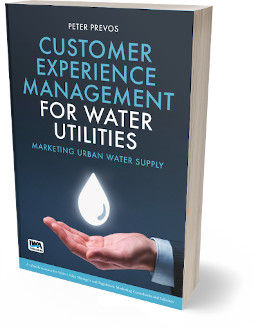
Towards Balanced Centricity: Moving Beyond Customer Focus

Peter Prevos |
586 words | 3 minutes
Share this content
It is an undisputed truism that service providers need to be customer-centric to be successful. This kernel of wisdom is more and more finding its way into the discourse on water utility marketing. While this statement is indisputable in a competitive environment, its application to public services such as water utilities is not beyond doubt. This article introduces the concept of balanced centricity to show the limits of focusing on customers alone.
Some contemporary marketing scholars, such as Evert Gummesson, are reconsidering the primacy of customer centricity have introduced the concept of Balanced Centricity. Total customer centricity is a limited foundation for service providers because full implementation risks the sustainability of the organisation.
Balanced Centricity
Services are a dyadic (two-way) relationship between customers and service providers. Instead, a network of activities involving a range of diverse stakeholders creates the service. Each stakeholder within the network is a beneficiary of the actions of another stakeholder. The service provider and each of the beneficiaries in the network co-create value.
Customers are not the end-point, but actively maintain their part of the value chain. Water has no intrinsic value in itself. Customer realise its value proposition when they consume the water. The value chain for water utilities thus extends far beyond the customer tap. Most customer taps service multiple people, who use the water to achieve the 3Cs: Comfort, Cleanliness and Convenience. It is, however, not the water that creates the value, it is the activities that people undertake with the water. The water utility is only a facilitator is value in a network of relationships.

The Multiple Stakeholders of Water Utilities
As public service providers, professional judgments, such as public health considerations dominate many aspects of service provision. These judgements are not the domain of the consumer experience but of the expert. Tap water is an undifferentiated service where natural monopoly provisions prevent utilities from providing individualised services. Customer centricity in public utilities is thus limited to those aspects that consumers are capable of influencing.
Balanced centricity is a situation where all beneficiaries in the value creation network have the right to the satisfaction of what customers need and want. Regulators are a principal beneficiary within the value creation network for utilities. Water utilities service them through information provision. The environment is also a significant beneficiary of water services, which in Australia is managed through environmental water allocations.
Water utilities are mediators between the natural environment and the value that customer create with this natural resource. Traditional customer centricity has limited application to water utilities because of our reliance on the natural environment. Being fully customer-centric could lead to a Tragedy of the Commons as the natural environment is depleted.
Water utilities have to balance their centricity between all stakeholders in the value-creation network, including the natural environment.

This brief discussion shows that being customer-centric is not the sole focus of public service organisations. Public service has inherent limitations on the extent to which consumer judgement can be incorporated in service design. Also, the value creation network perspective shows that the consumer is only one of the many beneficiaries of the value creation process.
If you like to know more about this topic, they please read my book Customer Experience Management for Water Utilities by IWA Publishing.

Customer Experience Management for Water Utilities: Marketing Urban Water Supply
Practical framework for water utilities to become more focused on their customers following Service-Dominant Logic.
Share this content


